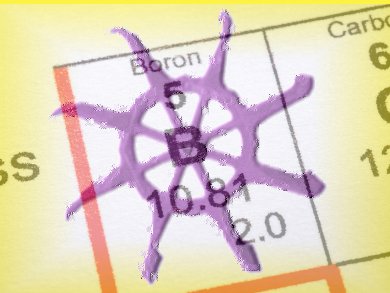A supramolecular assembly shaped like a paddle wheel with copper(II) ions at the nodes and containing an astounding 240 boron atoms has been synthesized and characterized by Chad Mirkin and colleagues, Northwestern University, Evanston, IL, USA. The team synthesized a functionalized carborane, with an isophthalic acid moiety, which they could then react with readily accessible copper(II) precursors to form the cuboctahedron. Characterization of such structures by X-ray crystallography is quite rare and the team suggests how their approach offers a valuable tool towards the creation of related nanoparticulate entities.
This work adds to the growing list of boron-rich nanomaterials with a particularly novel structure. Other less extravagant boron-based compounds have already been researched as high-energy materials, nanoelectronic components, agents for boron neutron capture therapy (BNCT), and in liposomes, dendrimers, nanowires, and nanotubes. The team highlights the simplicity of their approach compared with laborious organic synthetic routes to such boron-rich compounds and is now pursuing leads for new BNCT.
- An Exceptionally High Boron Content Supramolecular Cuboctahedron,
Daniel J. Clingerman, Robert Daniel Kennedy, Joseph E. Mondloch, Amy Sarjeant, J. T. Hupp, Omar Farha, Chad A. Mirkin,
Chem. Commun. 2013.
DOI: 10.1039/C3CC44173C




